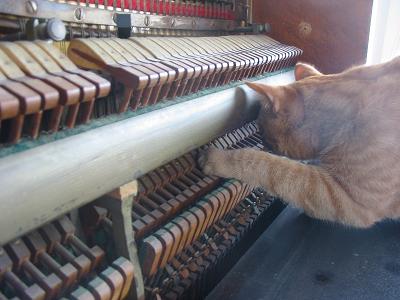Less tone also makes the noise of the action mechanism more noticeable. This section is a reminder that a piano is technically a percussion instrument when you hear those tiny hammers pounding away at whatever tone they may produce. Hearing loss from ear damage or aging doesn’t help to hear these notes either.
When it comes to how much to stretch the tuning, I’ve found this section is probably the most inconsistently tuned among other piano tuners I’ve heard. Tuners will have a consistent stretch, then tune this section screamingly sharp or flat. Even the digital pianos I’ve played are noticeably flat in the top five notes relative to the tuning stretch of the rest of the piano. What’s the deal?
I use different checks for the top octave since most of my usual checking intervals are hard to hear that high up. I tune primarily with octaves in this section, paying close attention to the last few notes I just tuned. I then check with double octaves, then with the octave above middle C. This helps me to relate how the top octave interacts with the rest of the piano.
One technique I used earlier on to maintain a consistent tuning in the top octave was to tune C8 immediately after C7, then tune each note from C8 down to C7 with octaves. Drawing a straight line is easier if you have two points to connect, and this technique uses the same concept.

